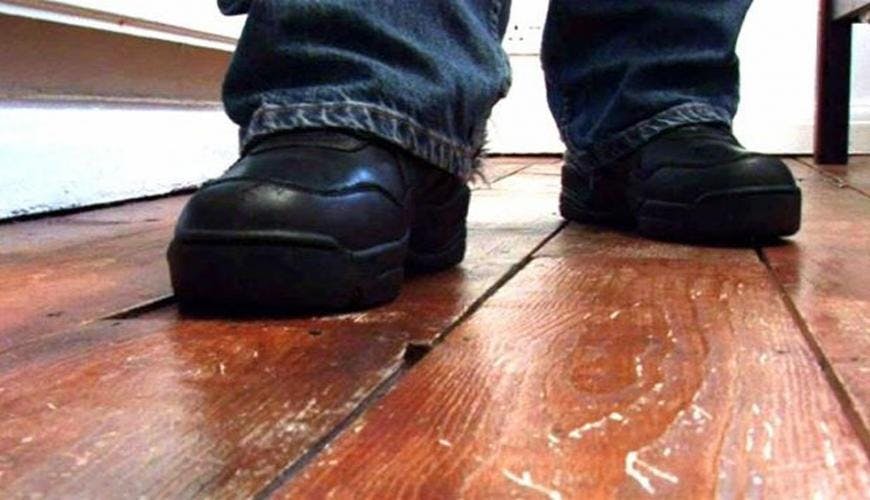
Screw the Subfloor to the Finished Floorįirst, determine if your wood floors are worth repairing. Use Construction Adhesive to Fill Long Gaps. Nail a Piece of Wood Along a Warped Joist. Here are 7 ways to stop your wood floors from being squeaky: Squeaks mean there’s movement somewhere in the floor. When it happens, take some time to find the cause. Most squeaky floors aren’t caused by foundation issues. Noisy floors show there’s a bigger problem than your ice cream consumption. Don’t panic yet. The easiest solution is to avoid walking on the squeaky spot. Now, everyone knows why the ice cream disappears overnight. You’re almost to the fridge when the floorboards betray you with a loud squeak. If you need wiring updated in the basement this can be a good time to access the portion in the lights without ripping out your ceiling.You tiptoe to the kitchen for a midnight snack. #FLOOR CREAKS WINDOWS#
Music is pretty dulled, I think it comes out through their windows and back in mind easier than through the floor. I have 2" concrete, 3/4 subfloor, spray foam, roxul and 5/8" drywall - I can hear that conversations occur I can't make out the words unless people scream or are really loud. I'd also get some friends to do some running like children do upstairs while you are down so you get an idea. Put a radio on loud and go into the basement to see what you'll need to tolerate. If the subfloor looks dicey pull it and you can put roxul insulation into the joist bays to give yourself better sound protection. Make sure there aren't any squeaks - if you are living in the basement you'll hear everything. Run a straight edge around the room and build up any dips (SLC, wood, etc). Use screws to make sure the subfloor is well fastened to the joists. When you pull it you'll likely find that your floor is diagonal laid solid wood.

If you remove it you'll be able to address any issues with the subfloor. Material wise that stuff is $3.50 a sq ft new it is only 1/4" thick and yours has probably been refinished in the last 70 years, probably has some dents and not as thick as it was previously. Save it if you want / put it on CL someone will take it off your hands. You can probably remove it easily enough that it comes up undamaged for the most part. Here's the floor I currently have and the LVP that I want to add:
 I don't know anything about flooring, its my first house, been living in it for a week and I have never put down any flooring. I'm not sure if the wood is moving because of an uneven subfloor, maybe?. The wood itself looks nice and shiny, it just squeaks like crazy. My question is: Is there a way to fix the squeaks on the floor and put LVP on top, or is my only option to remove the hardwood floor and put the LVP in the subfloor with underlayment? My plan was to fix the squeaks and then put LVP on top, since this area of the house is going to be rented out.Ī lot of people told me not to remove the hardwood floors because it gives value to the house, but I think to myself, who wants a house with these hardwood floor squeaking (besides me, since I'm thinking as an investment property). I tried putting baby powder and all that. But I stopped, since I would have to screw down every single board. In some areas you just push the wood with your hand and you see the plank moving. I noticed that is mostly the boards rubbing against each other seems to be what is causing the squeaks. The hardwood floor squeaks everywhere, not in just a specific spot or area. The house has hardwood flooring all over the house. I just bought an old house that was build in the 1950s.
I don't know anything about flooring, its my first house, been living in it for a week and I have never put down any flooring. I'm not sure if the wood is moving because of an uneven subfloor, maybe?. The wood itself looks nice and shiny, it just squeaks like crazy. My question is: Is there a way to fix the squeaks on the floor and put LVP on top, or is my only option to remove the hardwood floor and put the LVP in the subfloor with underlayment? My plan was to fix the squeaks and then put LVP on top, since this area of the house is going to be rented out.Ī lot of people told me not to remove the hardwood floors because it gives value to the house, but I think to myself, who wants a house with these hardwood floor squeaking (besides me, since I'm thinking as an investment property). I tried putting baby powder and all that. But I stopped, since I would have to screw down every single board. In some areas you just push the wood with your hand and you see the plank moving. I noticed that is mostly the boards rubbing against each other seems to be what is causing the squeaks. The hardwood floor squeaks everywhere, not in just a specific spot or area. The house has hardwood flooring all over the house. I just bought an old house that was build in the 1950s.






 0 kommentar(er)
0 kommentar(er)
